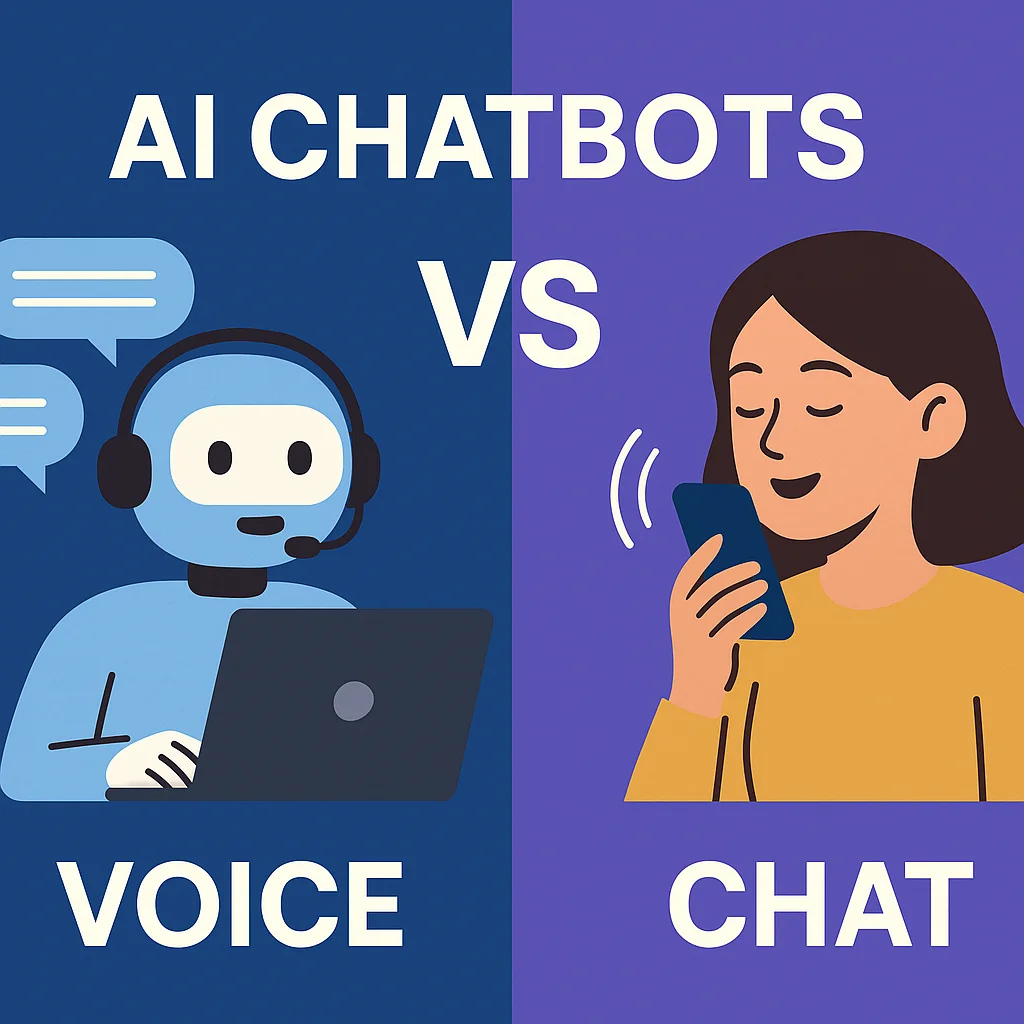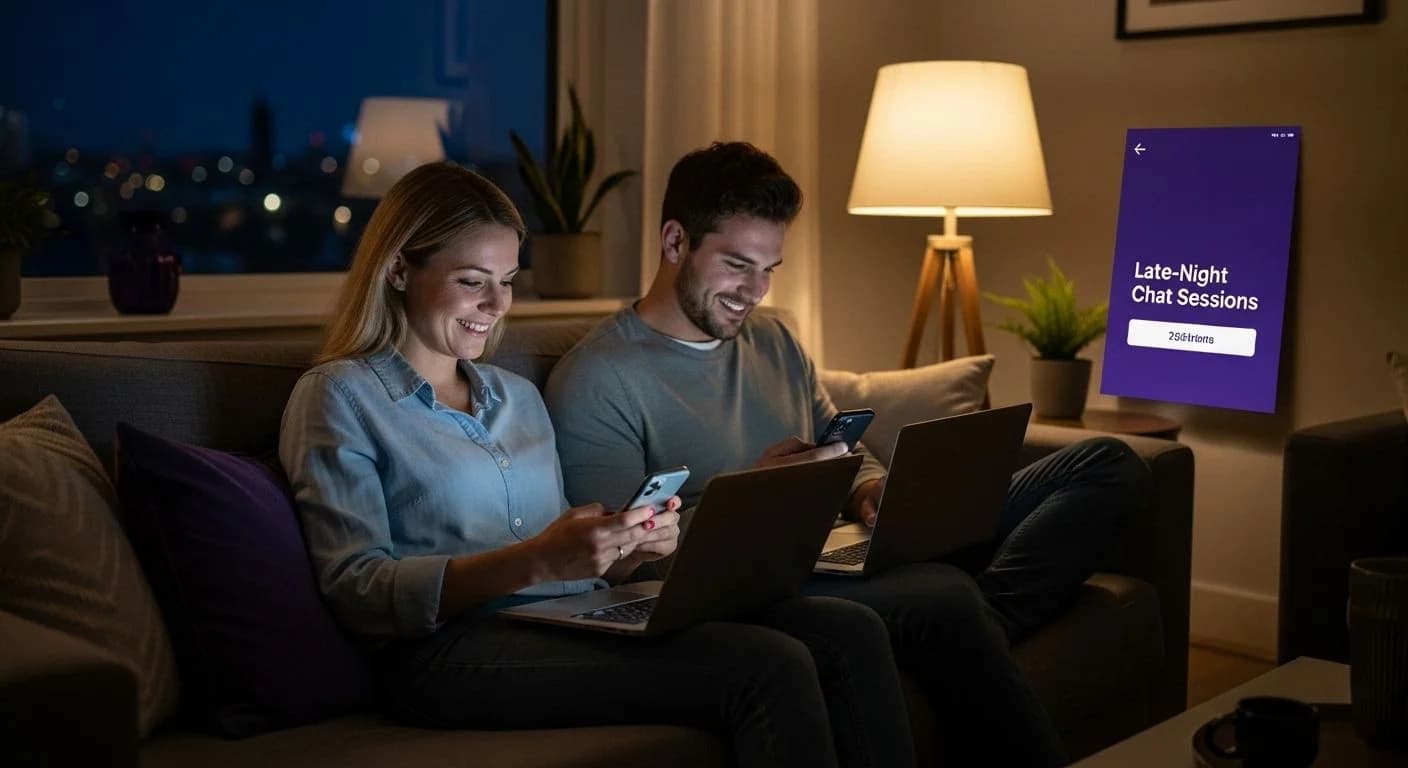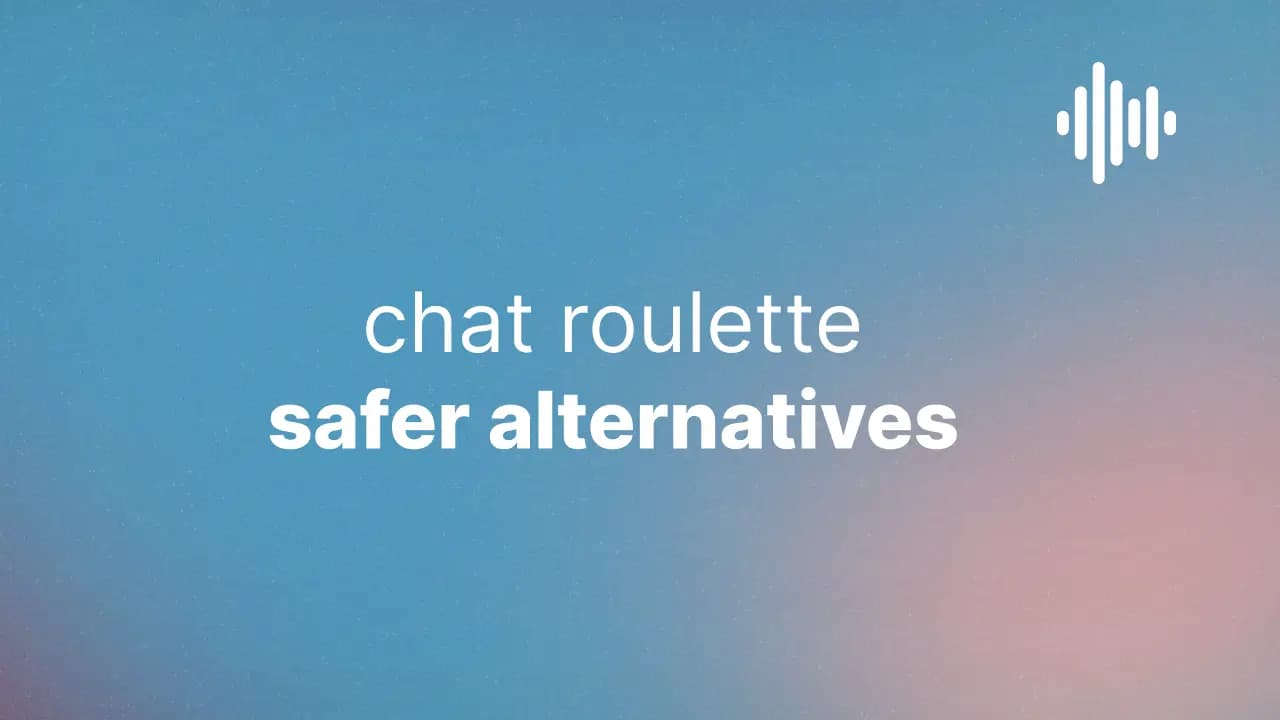Summary
Voice-first gaming is revolutionizing digital connection by creating deeper bonds through authentic voice interactions, contrasting sharply with AI chatbots and text-based systems. This comprehensive analysis explores the psychological benefits of voice-only communication, industry trends from 2024 gaming communities, and the potential risks of voice-only matchmaking in games. Key insights include: 67% of multiplayer gamers use voice chat weekly, the rise of Discord from 45 million to 200 million users, and how voice triggers mirror neuron activity that text cannot replicate. The article examines why voice-only platforms outperform AI companionship, the emotional displacement effect of AI interactions, and the future of micro-connections in voice-first dating and cross-game lobbies. Target audience: Gamers, social platform users, and anyone interested in authentic digital connection.
It's late at night.
Your room is quiet, lit only by the soft blue glow of your screen. Somewhere, thousands of miles away, another person is staring at theirs. You both scroll through feeds, swipe past faces, and maybe type a few messages — the digital equivalent of small talk. But it feels hollow.
We're supposedly more connected than ever, yet somehow, loneliness is hitting record highs. The tools meant to bring us closer — dating apps, group chats, even AI companions — often leave us emptier. A chatbot can keep you company for hours, but when you close the tab, there's no lingering warmth. Just silence.
But here's the thing: long before swiping, texting, and infinite scrolling, humans built bonds through something simpler, older, and far more intimate — the human voice. And if you've ever stayed up until 3 AM in a game lobby, talking to someone you just met, you know exactly how different that feels.
The Rise of Voice in Gaming and Beyond
Voice chat has always been gaming's secret weapon.
As early as the Xbox Live era in the 2000s, people were building friendships — and rivalries — in real time, through headsets. According to Newzoo's 2024 Multiplayer Trends Report, 67% of multiplayer gamers use voice chat every week, and over half of them say it's the main reason they return to a game.
Gaming normalized the idea that you could form a real connection with someone without ever seeing them. Discord took that model beyond games, exploding from 45 million users in 2017 to over 200 million in 2024. Twitch streamers and communities use voice not just to play, but to hang out — proving that the appeal isn't tied to gaming alone.
What's interesting is how sticky voice is. Once people get used to real-time conversation, they rarely go back to text-only environments. Even non-gamers are drawn to spaces where they can talk without the performative layer of video — it's intimate without being exhausting.
Why Voice Works When Text Doesn't
Psychologists have been saying it for years: communication is more than words. Tone, pacing, and cadence convey up to 38% of emotional meaning, according to research from Albert Mehrabian. Text strips all of that away.
In voice, a pause can mean hesitation, a faster pace can show excitement, and a subtle shift in pitch can reveal comfort or unease. You hear someone laugh — not "lol," but the real thing — and your brain recognizes it as genuine human connection.
There's also a neurological angle: hearing a voice triggers mirror neuron activity in ways text simply doesn't. That's why hearing "I'm proud of you" hits different when it's spoken rather than typed.
On an evolutionary level, voice is the original social technology. Long before written language, stories, warnings, and affection traveled by sound. In a sense, voice-only platforms aren't an innovation — they're a return to what humans do best.
The AI Chatbot vs. Human Voice Dilemma
In the past two years, AI companionship has exploded. Apps like Replika, Character.AI, and dozens of others promise personalized, always-available conversation partners. On paper, it's perfect. In practice, it's something else entirely.
AI is designed to mimic empathy, not feel it. It can simulate listening, offer encouraging words, even mirror your humor. But because it can't truly care, it lacks the unpredictable, vulnerable magic that comes from talking to a real person.
There's also the risk of what researchers call "emotional displacement" — the more time people spend with AI companions, the harder it becomes to tolerate the unpredictability of human interaction. You get used to the safety of a scripted back-and-forth, and suddenly real voices feel… complicated.
Whisperly was built on a different philosophy: no scripts, no algorithms, no pretending. Just people. Real voices, real moments, real stakes. Learn more about why we built Whisperly to solve the problems with existing voice chat platforms.
Why Video and Text Aren't Always the Answer
Video calls are the default "next level" in most online interactions, but they come with baggage — appearance anxiety, self-consciousness, and the performative need to look "on." Text, on the other hand, removes that pressure but also strips away emotional nuance.
Voice sits right in the middle. You can hear warmth, curiosity, or sarcasm instantly, without worrying about whether your hair looks good. It's intimacy without image pressure — a kind of social "middle ground" where the focus is on what's being said, not how you look while saying it.
This is why so many late-night conversations in games or voice apps feel strangely deep. You're not distracted by faces or filters — you're just… there, in the moment. For more on this, check out our guide to voice chat with strangers and how it's changing online connection.
The Whisper Hour Experiment
Here's a little-known fact: loneliness peaks at night, especially between 9 PM and 4 AM. Psychologists studying sleep patterns and emotional states have found that this window — often called "the quiet hours" — is when people are most open to self-reflection and vulnerable conversation.
Whisperly's Whisper Hour feature leans into that. Imagine opening an app, joining a voice room with strangers, and knowing everyone else is here for the same reason — not to scroll, not to swipe, but to talk. No profiles to judge, no photos to overanalyze, just voice.
We've already seen moments you couldn't script:
- Two strangers talking about their first heartbreak for an hour.
- A small group laughing uncontrollably over a shared gaming story.
- Someone finally sharing something they'd never told anyone before — simply because anonymity made it feel safe.
This is the kind of connection that can't be faked by AI or reduced to an emoji. It's the same kind of comfort that anonymous voice chat provides for insomniacs during those lonely late-night hours.
Where Voice-Only Is Headed Next
Voice-only isn't just a niche. The rise of platforms like Clubhouse (at its peak), Discord's voice channels, and Twitter Spaces proved there's mass appetite for conversation without cameras. But the next wave isn't about broadcasting to hundreds — it's about micro-connections.
Imagine:
- Voice-first dating: where you match based on conversation chemistry before ever seeing a profile.
- Cross-game voice lobbies: meet people outside the game you're currently playing, but who share your gaming interests.
- Night-time social hubs: global spaces where people drop in during peak loneliness hours.
In a culture drowning in visual content and AI mimicry, voice might be the human reset button. For introverts especially, this shift toward voice-first connection could be revolutionary. Learn how introverts can make friends through voice chat apps and anonymous platforms.
Closing Thoughts
Technology tends to move toward complexity — more visuals, smarter algorithms, flashier features. But sometimes the most powerful innovation is subtraction. Remove the filters, the video feed, the chatbot scripts… and you're left with something older than the internet itself: a voice saying, "Yeah, I get you."
Maybe the future of digital connection isn't about seeing more. Maybe it's about hearing more. And maybe, just maybe, the best way to practice that is through voice-only chat apps that help you connect more deeply, practice languages, and build social confidence.
Ready for a Better Way to Connect?
Join Whisperly and experience voice-first, consent-gated video chat that actually respects your safety and privacy.
Start Chatting NowFAQ
Why are people craving voice now?
Voice restores emotional nuance lost in feeds, filters, and AI text. It feels human without the pressure of being on camera; see why we built Whisperly.
Is video always better than audio?
Not for comfort and authenticity—video adds appearance anxiety and performance. Voice lets people relax and open up without visual scrutiny.
How does this relate to AI companionship?
AI can fill time but may displace real interactions. Human-to-human voice builds the real skill: connection; try a synchronous voice window.
Who benefits most from voice-first spaces?
Gamers, night owls, language learners, and anyone who prefers low-pressure socializing. The format scales across contexts without profile performance.



